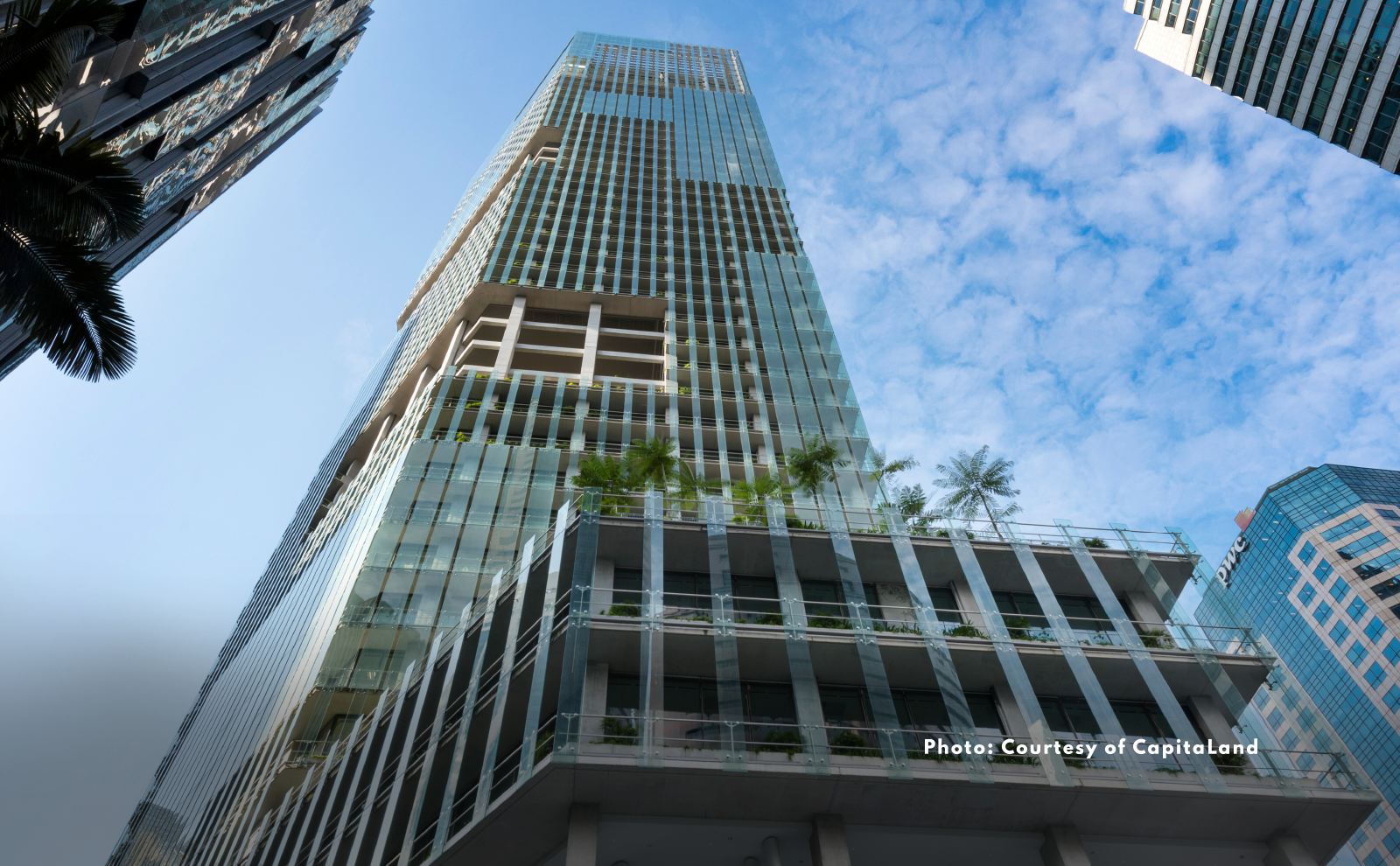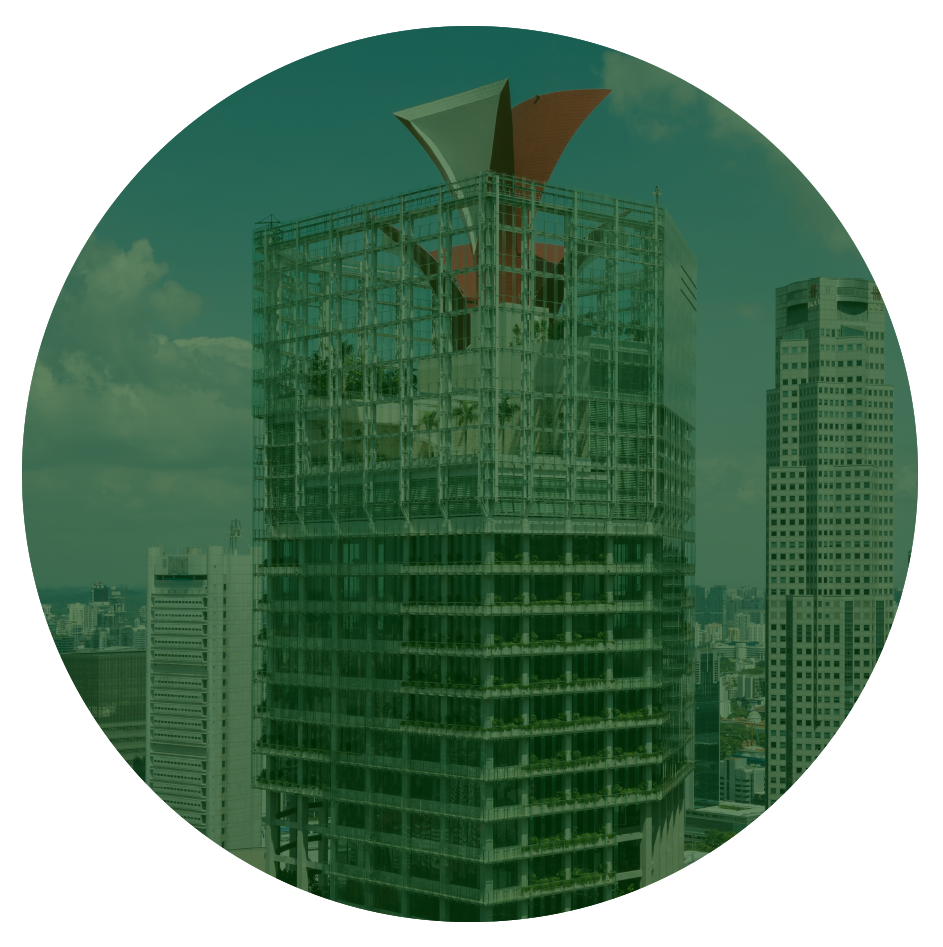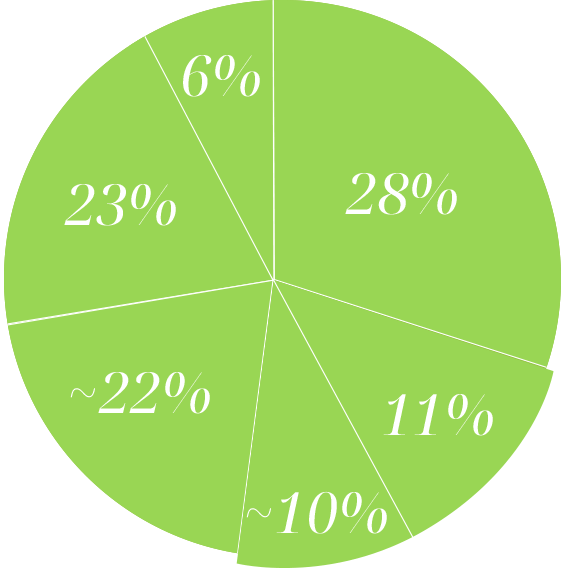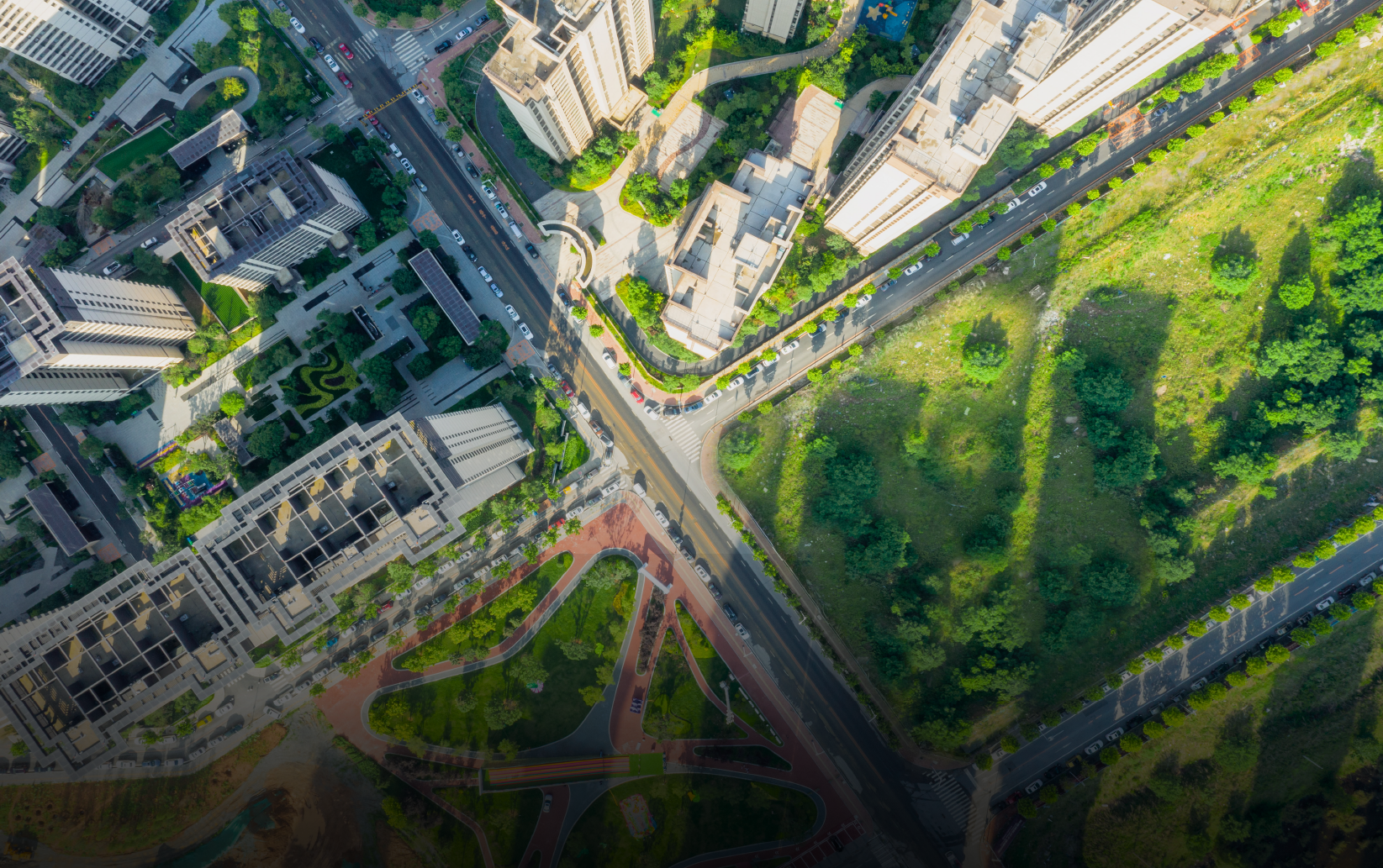
BUILDING ANET ZERO
FUTURE
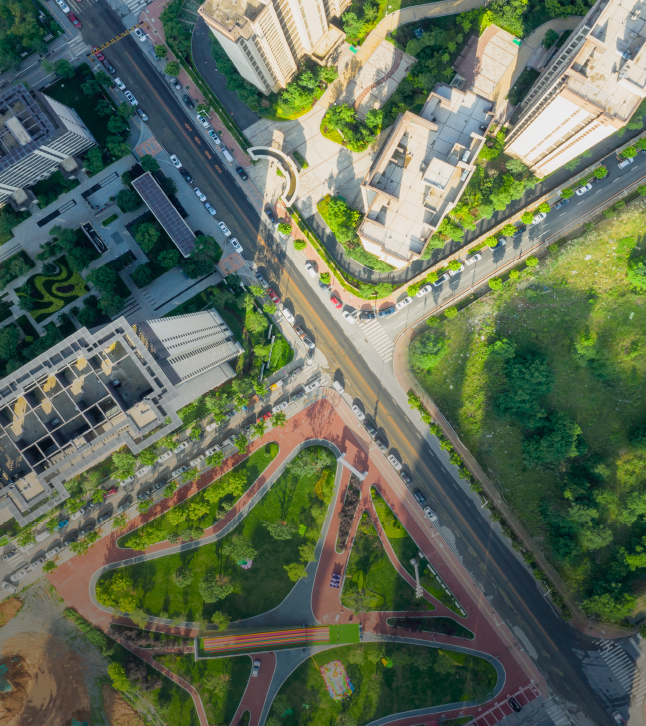
BUILDING ANET ZERO
FUTURE
Accelerating sustainable solutions for the built environment
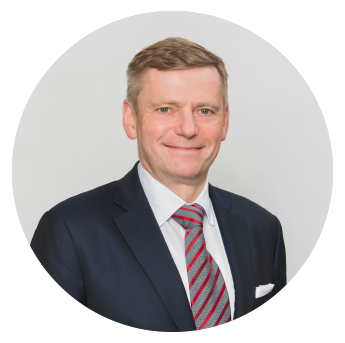
DR UWE KRUEGER
HEAD, INDUSTRIALS, BUSINESS SERVICES,
ENERGY & RESOURCES
HEAD, EUROPE, MIDDLE EAST & AFRICA
TEMASEK
AS THE WORLD’S POPULATION IS PROJECTED TO INCREASE BY OVER
20 PER CENT
by 2050, demand for infrastructure will surge. This makes transforming the global built environment even more critical as we tackle climate change. Our buildings and infrastructure need to be sustainable to accommodate this growing population, to avoid dire consequences.
Today, the built environment contributes to more than a third of the world’s greenhouse gas emissions. Recognising this urgent need to mitigate carbon emissions, Temasek proactively invests in sustainable solutions that promote decarbonisation across the sector.
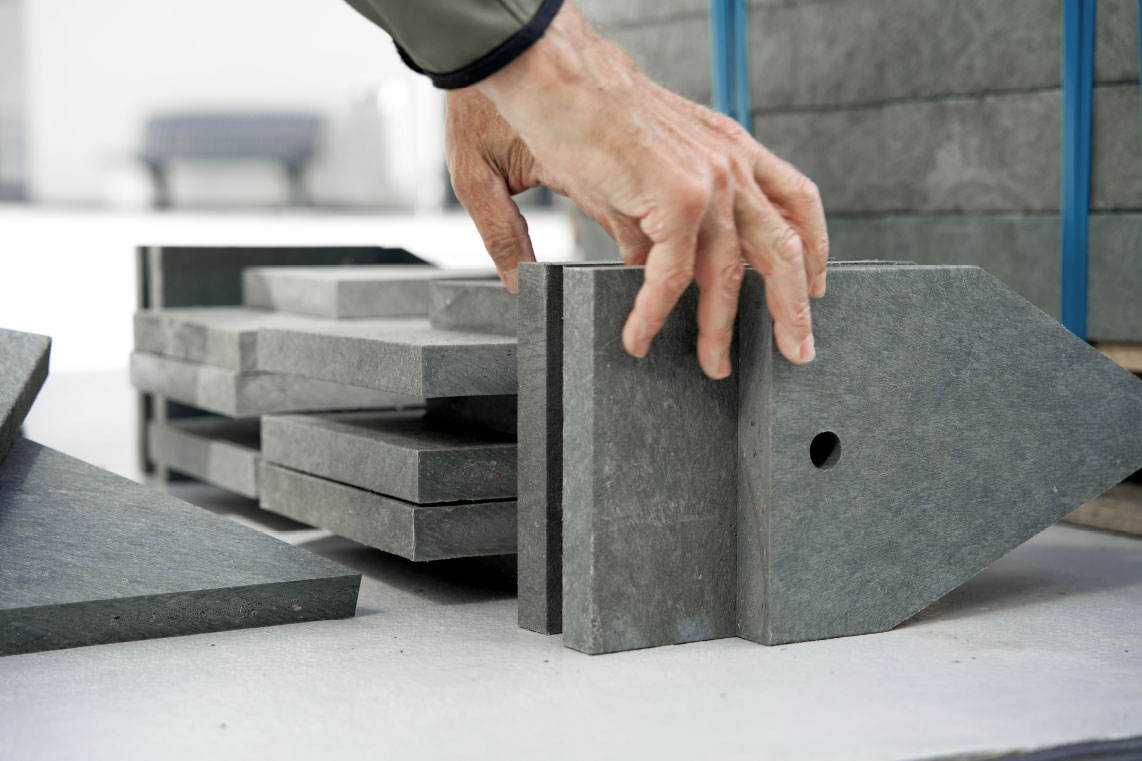
“There is a need for private capital to be purposefully deployed to realise the sustainable future we want,” said Dr Uwe Krueger, Temasek’s head of industrials, business services, energy and resources, and head of Europe, Middle East and Africa. “As a long-term investor, we see our role in funding innovative solutions to help make carbon abatement more affordable in the built environment.”
In line with this, Temasek has made investments that help the built environment’s transition towards net zero emissions. These include firms and projects that decarbonise “hard-to-abate” segments in the building value chain, such as the cement and steel industries, where processes like production and disposal are traditionally heavy carbon emitters.
Temasek also catalyses energy-efficient solutions, such as brownfield district cooling and electrification of heating applications, which can be deployed in existing buildings. It encourages the development of long-duration energy storage solutions – vital for supporting the widescale deployment of renewable energy sources within building infrastructure.

A BLUEPRINT FOR GREENER BUILDINGS
Decarbonising the built environment poses several challenges. One is in the sector’s fragmented nature. Each stage of a building’s life cycle – production, construction, use and end of life – involves multiple value chains with unique emissions sources. This fragmentation often results in higher costs and sluggish adoption of pioneering sustainable solutions. As such, reviewing the system-wide decarbonisation of the built environment, from a building’s inception to end of life, is crucial.
“It is important to approach the ecosystem holistically, collaborating with all stakeholders across the value chain to accelerate decarbonisation and build scale,” explained Dr Krueger. “Temasek encourages the development of innovative sustainable solutions, and seeks to deploy capital meaningfully to invest in novel technologies while working with like-minded partners to catalyse these innovations.”
Cement and steel are fundamental building materials and integral to the built environment. Yet, their production is extremely carbon-intensive, contributing significantly to global emissions. Sensing this opportunity, Temasek invested in a company that created a new mineralisation process to cut carbon emissions in cement production by 60 per cent. It also invested in another company that focuses on electrifying and decarbonising steelmaking using renewable energy.
Another hurdle in decarbonising the built environment arises when navigating the existing stock of buildings in established communities. Implementing large city-scale projects may be difficult due to varying stakeholder interests. To address this, Temasek supports retrofitting existing structures with sustainable energy solutions, repurposing spaces for multiple uses, rebuilding with eco-friendly materials, and incorporating sustainable solutions into building designs.
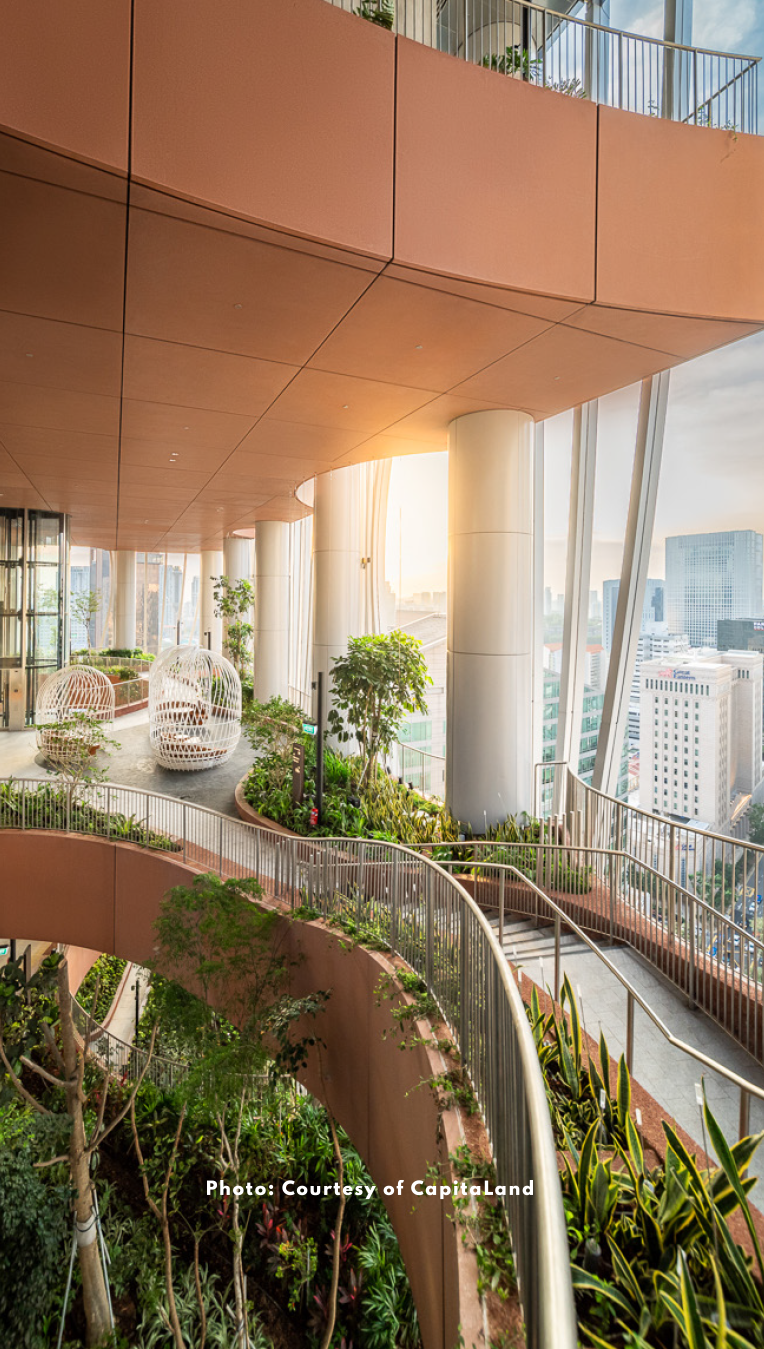

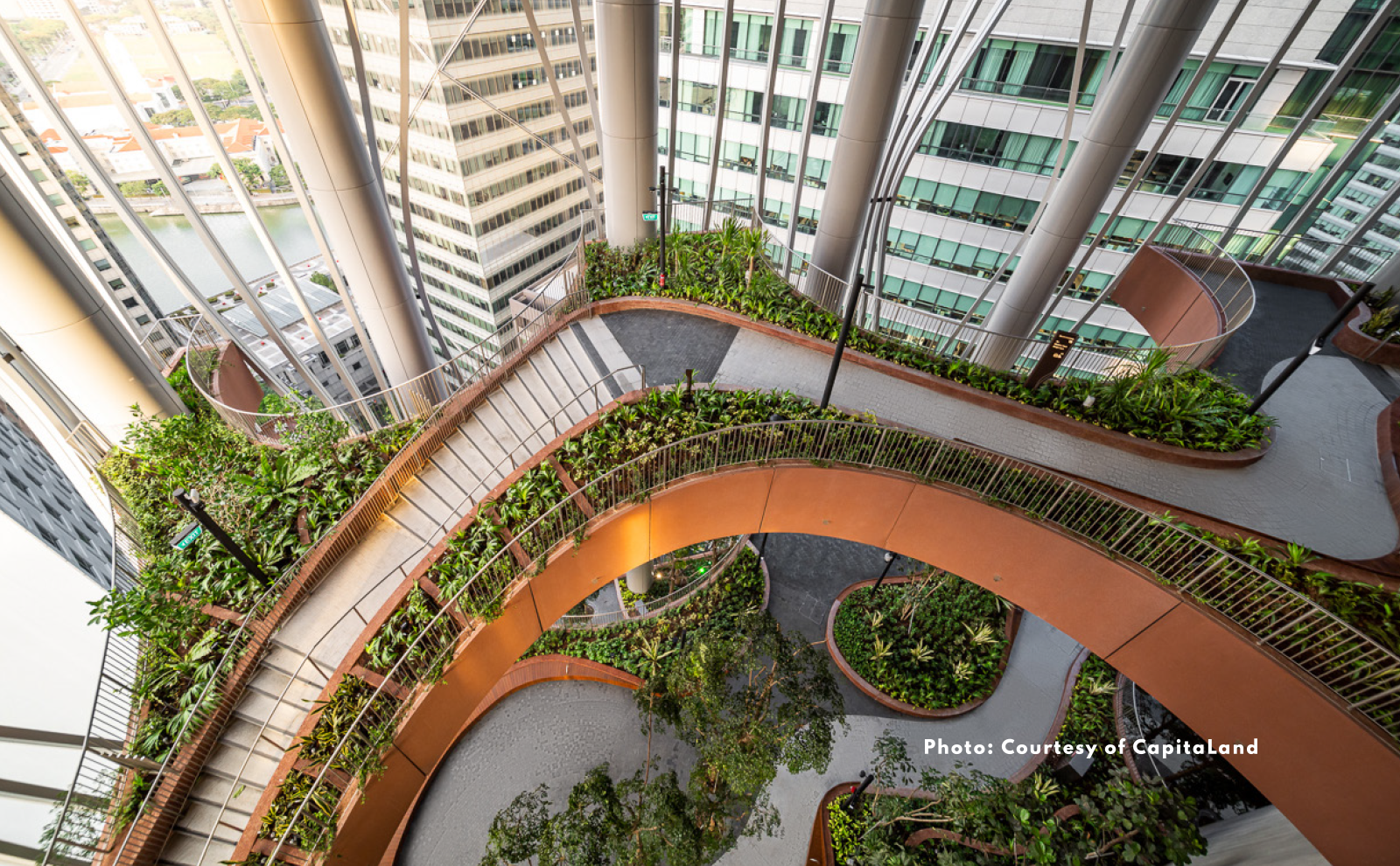

“There is a need for private capital to be purposefully deployed to realise the sustainable future we want.”
RISING TO THE CHALLENGE
The race to decarbonise the built environment is intensifying as growth in energy demand within the sector continues to outpace investments in decarbonisation. Nowhere is this more evident than in the Asia-Pacific region, home to the highest numbers of megacities worldwide. As rural-to-urban migration in rising economies like China and India leads to the continued growth of megacities, increasing pressure on the built environment could result in higher emissions as more infrastructure is needed to accommodate the inflow of people.
Against this backdrop, capital providers like Temasek play an important role by accelerating investments in decarbonisation solutions for the sector. The goal is for innovative technologies and solutions to achieve scalability and become more affordable, ultimately resulting in widespread adoption. “Temasek’s vision is to see the world transition towards a cleaner built environment, by tapping on innovation and using sustainable materials, cleaner transportation means and renewable energy sources,” said Dr Krueger. “Embracing a cleaner built environment not only protects and enhances our community and the places we live in, but can also prevent further destruction to our natural environment and allow us to coexist harmoniously with nature.”
